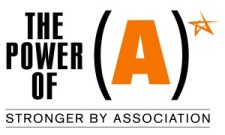The Power (and Limitations) of Social Media
24 April 2016 Leave a comment
 At a recent conference, I was diligent in my efforts to use social media to not only capture my own notes, but share them with my colleagues and associates, present and absent. I got a decent amount of reaction and interaction for my efforts. Retweets, likes, comments and discussion. (Nothing remotely viral, mind you, but my efforts did not go unnoticed by the (in the grand scheme of the world) relatively small community of professionals who share my interests and concerns.)
At a recent conference, I was diligent in my efforts to use social media to not only capture my own notes, but share them with my colleagues and associates, present and absent. I got a decent amount of reaction and interaction for my efforts. Retweets, likes, comments and discussion. (Nothing remotely viral, mind you, but my efforts did not go unnoticed by the (in the grand scheme of the world) relatively small community of professionals who share my interests and concerns.)
I even got a tweet from a colleague whom I admire and who was not at the conference that my social media flow “made me feel like I was there and able to participate.”
I was simultaneously flattered and horrified by the reaction.
Flattered, because it suggested, perhaps, that I had been reasonably successful in a small but arguably impactful way in amplifying engagement and advancing the discourse of the brick-and-mortar event within the likeminded community who care about my profession and its future.
Gratified that the focus achieved through the laborious process of reducing insights to fit the 140 character limits of the media seemed to have been successful.
Horrified to think that these soundbites, absent all the context, nuance and depth of the intellectual substance generated by the conference itself, could conceivably pass for (and be accepted) as remotely adequate or even marginally profound.
Frustrated that the limitations of capturing the idea is sometimes achieved at the expense of failing to give full or proper credit to the source of the insight. Just because I tweeted it doesn’t mean the thought was mine. But with a 140 character limit, there is only so much capacity to convey an idea and give proper credit where credit is due. (The media almost compel us to become involuntary plagiarists.)
And in my morning after moment, I am left wondering: We live in a world where political engagement and news have already been reduced to soundbites, slogans and attention grabbing at the expense of substance, a process readily evident in the current presidential political campaigns and how they are covered. This has replaced serious political discourse and deep engagement with achieving solutions to the complex issues and challenges that face us as a society. News has evolved from “what bleeds, leads” to whatever can ignite passion is more important than advancing the dialogue in any meaningful way. That passion is not a bad thing; maybe it is even a critically necessary thing. It is just insufficient if it fails to enable action that achieves actual solutions. (It has been two years since #bringbackourgirls galvanized global attention … but those girls are still gone.) In politics, that passion can even be counterproductive to actually getting anything done and impede building any basis for consensus as a foundation for concrete action.
Maybe I am just sleep deprived and it will all look better tomorrow, but the question I am left with: Have associations (or really any cause or mission-driven enterprise) become as attention-deficit benighted as our politics and news, and do we now accept that soundbites (slogans) that resonate actually do constitute sufficient wisdom and knowledge? Or constitute an actual accomplishment?
I do not want to in any way dismiss or disparage the sincerity and good will behind this new , social media reality … I just wonder whether it actually is getting us anywhere.
Or worse, creates an illusion of substance that enables complacency.









